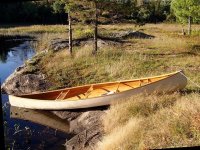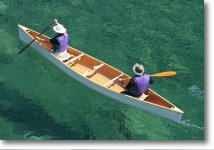I have been wanting to build a strip canoe for sometime now, and I was thinking of using local sawmill lumber. In this area of the country popular, red cedar, sassafras, black Walnut, cherry and oaks are the primary wood. Oak is definitely out. I was planning on using popular and maybe adding a little black Walnut and cherry for decoration.
Now the questions, what difference does it make what type of wood you use, other than the weight issue, because it will be glassed inside and out?
When people mention a final coat of varnish, is it the true varnish or is this a general term for coatings including urethanes.
Thanks in advance for any input or advice.
Roy
Sent from my SM-G900V using Tapatalk
Now the questions, what difference does it make what type of wood you use, other than the weight issue, because it will be glassed inside and out?
When people mention a final coat of varnish, is it the true varnish or is this a general term for coatings including urethanes.
Thanks in advance for any input or advice.
Roy
Sent from my SM-G900V using Tapatalk




